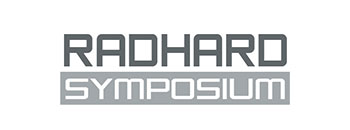Abstract

Upcoming Space Weather Missions with Austrian Contributions
W. Magnes1, D. Fischer1, M. Agú1, I. Jernej1, R. Steinhöfler1 and A. Valavanoglou1
1 Space Research Institute, Austrian Academy of Sciences
Abstract
Severe space weather has the potential to cause significant socio-economic impacts. It is widely recognized that mitigating this risk requires more comprehensive observations of the Sun and heliosphere, allowing more accurate and timely prediction of significant events.
In this context, observations from the two Sun‐Earth Lagrange points L1 and L5 (both remote and in situ) offer considerable benefits in our ability to monitor and forecast space weather. L1 is located between the Earth and the Sun, making it ideal for real-time solar wind monitoring. It provides short-term warnings (about 30–60 minutes) of incoming solar storms heading directly towards Earth. L5, trailing Earth in its orbit by about 60°, offers a side view of the Sun, allowing the observation of active regions before they rotate into Earth’s view. This gives advance warning of potential solar storms several days in advance, although it is less effective at predicting immediate effects. Placing space weather missions at these two points at the same time can therefore be seen as ideal.
The Space Research Institute (IWF) of the Austrian Academy of Sciences is involved with magnetometer hardware on both, an L1 and an L5 satellite. The Space Weather Follow-On mission to L1, which will be launched in September 2025, is a joint undertaking by NASA and the National Oceanic and Atmospheric Administration. The IWF is responsible for the front-end electronics of the two magnetic field sensors which have been developed under the lead of the Southwest Research Institute in Texas. As part of ESA's Vigil mission to L5, IWF is partnering with Imperial College London to provide the magnetometer (Eastwood et al. 2024). Development of this instrument, for which IWF is providing the fully redundant power supply electronics, has just started. Vigil is scheduled for launch in 2031.
References
[1] Eastwood, J.P., P. Brown, W. Magnes, C.M. Carr, M. Agú, R. Baughen, G. Berghofer, J. Hodgkins, I. Jernej, C. Möstl, T. Oddy, A. Strickland, A. Vitkova: The Vigil magnetometer for operational space weather services from the Sun‐Earth L5 point, Space Weather, 22, doi:10.1029/2024SW003867, 2024.

